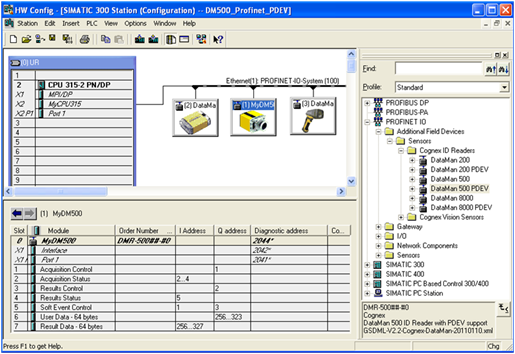

- Change byte offset db address step 7 siemens update#
- Change byte offset db address step 7 siemens code#
There are some status bits you can use to debug connection issues and a few static tags that can be accessed, but in most case you shouldn’t need them. You can set this pointer using the ANY format (“P#bit address” “data type” “length”): These holding registers are used for Modbus functions 3 (read Word), 6 (write Word), and 16 (write multiple Words). This pointer can be any global data block or a memory area (M). MB_HOLD_REGISTER: This defined the location (start and size) for the available Holding Registers (40001 to max defined register).If you would like to use an alternative port, this is where you set it. IP_PORT: by default, the IP_PORT will be set to 502, which is the standard port used for Modbus TCP communications.This must be unique for each instance of MB_SERVER or MB_CLIENT. CONNECT_ID: this defines a connection number on the PLC.DISCONNECT: the default for this input is 'FALSE.' Setting the input to 'TRUE' will cause the server to sever any active connection and refuse any connection attempts.You’ll see there are only a few inputs to this block: When you add the instruction, you’ll notice it will need its own instance DB, so go ahead and create one. I’m starting a project from scratch, so I’m going to add an instance of MB_SERVER to my OB1. Siemens provides two Instruction blocks for setting up Client/Server Modbus TCP connections – you can find them under Communication on the Instructions Window – MB_SERVER and MB_CLIENT.Īs an example, let’s set up a Modbus TCP server on our PLC. Siemens S7 is far superior to S5 in the help and examples it has built in.Have a need to make data available from your S7-1200 PLC to a Modbus TCP Master (or SCADA)? Luckily, this is easy to setup. Also for pointer and any parameter descriptions, go to help and contents, down near the end of contents you will see appendix, open that and select data types and parameter types and then under parameter types it gives very good descriptions of how pointers and any's are made up.
Change byte offset db address step 7 siemens update#
(not sure if L P#DBX420.0 will work OK) L 40 // Loop of 40 (459-420 = 40 words) Next: T #Number // update loop counter A( L 32 L D // If 32<= DW <=I ) A( // AND L 126 <=I // DW <= 126 ) JC INC // 32<=DW<=126 Jump over and INC loop pointer L 32 // 20 HEX T D // into dataword INC: L P#2.0 //Offset in bytes to next dataword +AR1 // add it to address register using as indirect addressing L #Number Loop Next // Loop will decrement the number in the accumulator and jump to Next LAR1 #BufferAR1 // Once the loop has completed all 40 words, reload AR1 with what it originally had and //end here I found this example in the editing screen, select help and then help on STL, followed by a search of the term loop (usually used in indirect addressing problems). OPN DB50 // Open your data block L P#DBX 0.0 // Load first dataword in pointer format L 420 // your start address SLD 3 // The address is byte/bit format, so shifting right 3 moves the 420 outside the bit parts.
Change byte offset db address step 7 siemens code#
BufferAR1 - DWORD Number - Int The code as follows TAR1 #BufferAR1 //save the current AR1 to replace at the end of the block. I won't take credit for this, its a modernised copy of the built in examples you get in step 7 programming software. Any help would be appreciated Thanks Dave

Also ordered the step by step CDs from Siemens. Would it be easier to just use decimal? 32 and 126 anyway this is what I have so far STRT: NOP 0 L p20 Load hex 20 into ACCU1 L DB50.DBW 420.0 Load value in DBW 420 into ACCU1 (moving old value into ACCU2) L JC CHNG JU NOCH CHNG: NOP 0 L p 20 T DB50.DBW 420.0 NOCH: NOP 0 Here I would like to add one to a pointer that is added to the beginning address of DB50.DBW 420.0 Check to see if the pointer is <=40 JC STRT Jump to start of this program to check the next register if pointer less than 40 clear or zero the pointer END Not sure if I am loading a hex value of 20 when I do the L p 20 I don't understand the indirect addressing I have ordered a book on Siemens S7-300, 400 but I don't have it yet, I am trying to learn by reading the help and the PDFs but their explanations and examples don't always make sense to me. This is in an FC using STL What I want to accomplish is check each word to see if it is between 20 hex and 7E hex and if it is not to set it to 20 hex. I want to indirectly address DB50.DBW 420.0 through DB50 DBW 459.0 a word at a time (16 bit).


 0 kommentar(er)
0 kommentar(er)
